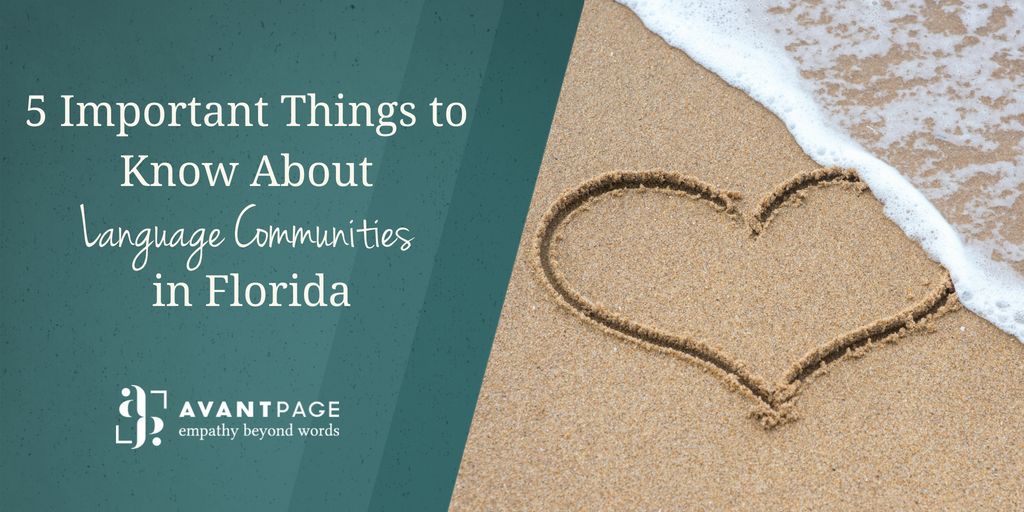The language communities of your state impact how you think about translation projects. Looking toward elections season, it’s particularly important to identify the language communities that you serve. This can help you comply with legal regulations and engage more voters, which can lead to increased turnout and support.
Florida has many unique language communities, each with its own needs for translation and communication. Here are five facts about Florida language communities that you should consider going into this election season.
1. There are more than 128 languages spoken in Florida homes.
This piece of 2015 Census data shows that there are an incredible amount of languages and a wide variety of cultures to consider when working on a translation project. Almost three million people in the Miami metropolitan area alone are bilingual or multilingual.
These facts emphasize the importance of being culturally aware when translating election materials. With such a large population speaking so many different languages, it’s important to maintain cultural sensitivity for each language community. This will help to engage voters more actively in the democratic process.
2. There is a very active French-language community in Florida.
While most people are aware of the active Spanish and Creole communities in Florida, few people know of the French community. As of 2017, 114,000 people speak French in their Florida homes.
With French being such a pervasive language in Florida, it’s important to consider the needs of this language community when translating election materials. There are many French dialects, so you’ll need to research which dialects people speak in your area. Reaching these voters in their native or chosen language of French will help you build a trusting relationship.
3. Miami accounts for 3% of the Limited English Proficiency (LEP) population of the United States.
This may not seem like a high percentage, but it is significant! If you don’t have a strategy to reach LEP voters, now is the time to develop one. LEP voters have specific translation and communication needs. To reach LEP voters, focus on what they want to hear about, and consider how you can deliver those messages.
If you need a starting point for strategizing, these four questions can help you reach LEP voters!
4. There are a handful of lesser-known language communities in Florida.
Florida’s language communities are more varied than you might think. In 2013, 86,000 people spoke Portuguese, 70,000 people spoke German, 60,000 people spoke Vietnamese, and 58,000 people spoke Chinese. When you’re translating election material, be sure to research which communities are prevalent in your area. If you find that a portion of your community’s population speaks one or more of these languages, plan to translate accordingly.
5. Florida has many Native American Tribes, each with their own language communities.
There are two federally recognized Native American tribes in Florida, the Miccosukee Tribe of Indians and the Miccosukee Tribe of Indians. There are also three other tribes in Florida, the Muscogee Nation of Florida, the Perdido Bay Tribe of Lower Muscogee Creeks, and the Choctaw Nation of Florida.
When translating election materials, make sure to reach these tribes effectively. Consider if the messaging and language speaks to the concerns and culture of these communities. Your voter turnout rates can increase as a result.
With such diverse language communities, it’s important for Florida elections professionals to strategize and plan translation projects effectively. If you don’t know where to start, give us a call at 530-750-2040, or request a free quote today!
GET VALUABLE CONTENT DELIVERED STRAIGHT TO YOUR INBOX. SIGN UP FOR OUR NEWSLETTER TODAY!

Ash is the Marketing Coordinator at Avantpage, Inc. Ash works to create high-value, targeted content that allows consumers to connect with us at Avantpage. They are a strong proponent of everyone having equal access to communication and information. They have written and created content for a variety of online platforms, and have been published in over 30 online platforms with varying topics. But Ash is other things too! An avid athlete, Ash enjoys spending their free time rock climbing, partaking in aerial circus sports, and practicing acroyoga.
